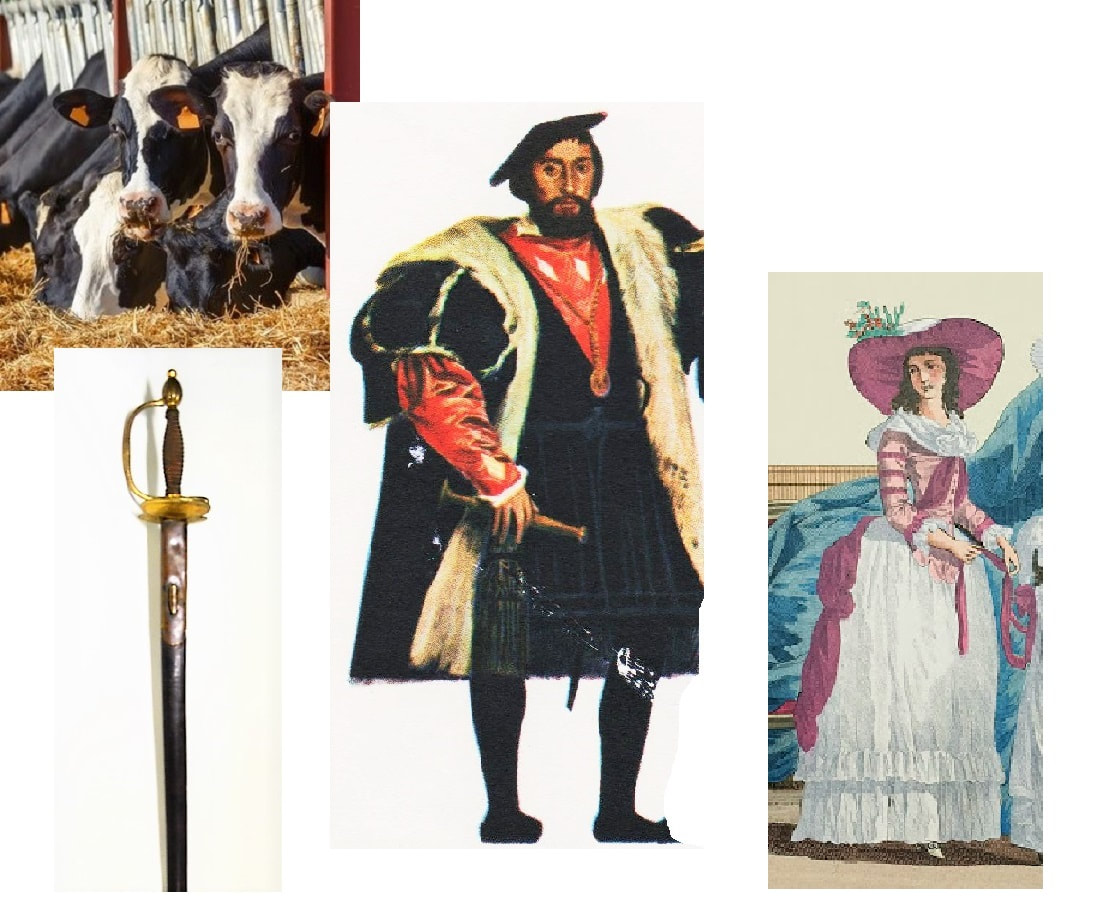The following is a brief synopsis of my research paper, without illustrations. The full paper can be accessed, including supporting photos and plates, in PDF format -- click on the icon above to read or download the entire paper. The paper is the culmination of several months of study, investigation, research and writing, which I hope will add something useful to the understanding of historical costume of the period. What do well-fed cows, swords in their scabbards, fur-lined medieval gowns, hands stuffed into pockets, and nosy Parkers all have to do with certain 18th century garment names? No idea? Please read on!
At the risk of adding more verbiage to the discussion on the obscure subject of the 18th century word ‘fourreau’, I’m piling on my own thoughts – but from a completely new perspective, and to an extent not dealt with previously. I hope my research will help to illuminate this small corner of 18th century costume history. As a trained linguist and historian, and former professional translator (French/English), I had noticed some misunderstandings in publications and online discussions around the 18th century fashion term ‘fourreau’. I felt it might be useful to study the question in depth from the standpoint of linguistics, and to look at the entire history of the word in the context of costume history. Linguistics can be an illuminating resource in comprehending otherwise puzzling fashion nomenclature of earlier centuries in general, but in this case I believed it was an essential tool in untangling the confusion around the 18th century use of the intriguing fashion term ‘fourreau’. Considered along with careful scrutiny of contemporary 18th century fashion illustrations and texts, I felt linguistics could make the whole subject less mysterious.
8 Comments
|
AuthorPatricia Preston, a.k.a. The Fashion Archaeologist, Historian, linguist, pattern-maker, enthralled by historical fashion, especially the 18th, 19th and 20th centuries.. Archives
August 2022
Categories
All
|
||||||||
Site powered by Weebly. Managed by Dot5Hosting


 RSS Feed
RSS Feed